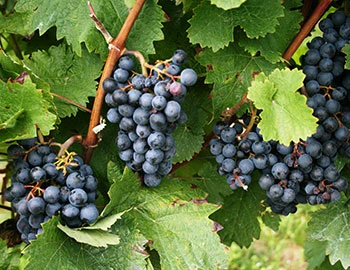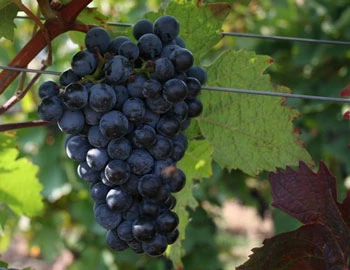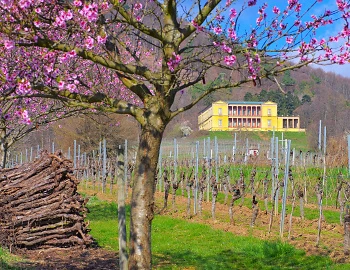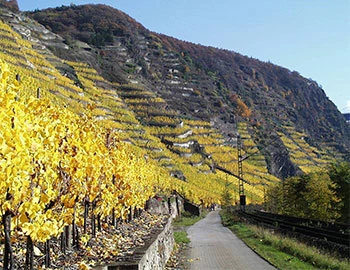Roter Satz 2015
QbA Pfalz, Rings, 750 ml

| Grape variety: | Portugieser, Sankt Laurent, Dornfelder, Cabernet Sauvignon |
| Producer: | Rings |
| Origin: | Germany / Pfalz |
Description
A ripe nose of sour cherries and dark berries. Subtle pepper notes. Very juicy on the palate with soft tannins and a balanced acidity.
Attributes
| Origin: | Germany / Pfalz |
| Grape variety: | Portugieser, Sankt Laurent, Dornfelder, Cabernet Sauvignon |
| Label: | Vegan |
| Ripening potential: | 1 to 5 years |
| Drinking temperature: | 16 to 18 °C |
| Food Pairing: | Italian antipasti, Apéro riche, Roast veal with morel sauce, Crispy roast chicken, Pork fillet with plums |
| Vinification: | fermentation in wooden barrel |
| Harvest: | hand-picking with simultaneous grape sel, strict selection |
| Maturation: | in large wooden barrel/foudre |
| Maturation duration: | 11 months |
| Volume: | 13.0 % |
| Note: | Contains sulphites |
Portugieser
Historical, though shady
The source of this variety source is not entirely understood.
According to the story, these shimmering blue berries get their name because they found their way to Austria in 1772 from the historic Portuguese city of Porto.
Historical documents relate that “The Earl of Fries was the Austrian emissary in various countries, including in Portugal. He had vineyards on his property in Vöslau. In 1772, he brought varieties from abroad to Vöslau, allowing them to grow in his vineyard.”
Curiously, however, this vine is completely unknown in Portugal, and so it is suspected to have come from Austria or Hungary.
Portugieser is characterized by its low demands in terms of climate and soil conditions. It also reliably produces high yields. Planted on around 4,500 hectares, this vine is one of the most important red wine grape varieties in Germany today.

Dornfelder
The reliable German Growth
This red grape is the most successful German new variety. The Dornfelder was created in 1955 at the State Institute and Research Station for Fruit and Wine Growing in Weinsberg by crossing the Helfensteiner and the Heroldrebe. The variety got its name from Immanuel Dornfeld, who founded the wine school in the 19th century.
Since then, Dornfelder has spread far, as this vine demands little of the soil, matures reliably, and has large, high quality yields. In Germany, around 10% of vineyard area is planted with Dornfelder.

Pfalz
Pfalz: Riesling meets Burgundy
Palatine winemakers manage the feat of vinifying top-tier crus from both white and red varieties. In addition, Riesling presents the same class here as Chardonnay and other Burgundy varieties. This versatility at high quality levels makes Germany’s second-largest wine region a trove of discoveries of all kinds. Tranquil winegrowing towns with a diverse range of culinary offerings and hotels make the Palatinate region a perfect wine travel destination.

Germany
Germany – Into the elite the hard way
Sitting in the heart of Europe, the hilly, lake-dotted landscape of Germany provides ideal, fertile soil for the most diverse vine varieties. From Albalonga to Zweigelt, over 140 different grape varieties are grown on about 100,000 acres, cared for by nearly 50,000 vintners. Most of these vintners are young, modern, internationally trained, inquisitive and urbane. It is hardly surprising, then, that German wine has a good reputation well beyond the country's borders.



